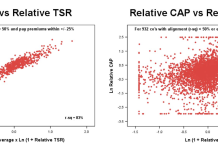Paddy Bradley, CEO of Swindon and Wiltshire Local Enterprise Partnership, describes developing sources of up-to-date labour market information to support decision making and track progress again set goals
As the COVID-19 pandemic began in early 2020, Swindon and Wiltshire Local Enterprise Partnership (SWLEP) was just finishing its Local Industrial Strategy (LIS). To ensure our decisions were based on facts, the SWLEP analysed a significant quantity of data as part of the Strategy development (see Figure 1). Local businesses and neighbouring universities contributed to and verified this data analysis.
The LIS was followed by the Swindon and Wiltshire Skills Plan, published in March 2020, which highlighted improving the use of skills and labour market intelligence (LMI) as one of its five long-term objectives.
When the COVID-19 pandemic started, therefore, we were confident about our data gathering and analysis skills. This provided an excellent foundation for what ensued – the unprecedented labour market shifts, in terms of size, spread and speed.

However, before we could fully benefit from our analytical capabilities, we had to establish a “real-time” source of LMI. Whilst the robust government data was abundant – from Nomis and Office for National Statistics (ONS), Department for Education (DfE), Ofsted, Department for Environment, Food and Rural Affairs (DEFRA), Education and Skills Funding Agency (ESFA) Data Cube to Department for Digital, Culture, Media & Sport (DCMS) Examine a Place service – most of it had a time lag owing to the time required to collate and publish these official statistics.
This meant that, as the COVID-19 pandemic took hold of the labour markets in early 2020, although we had access to monthly Claimant Count data, which measured the number of people claiming benefits principally for the reason of being unemployed, for many socio-economic indicators at the local authority level, we were still looking at data from 2019.
Developing an up-to-date picture
To supplement the publicly available government data, we procured access to proprietary online job postings data. This enabled us to not only observe the “real-time” changes in the local labour market, but also allowed us a deeper investigation across towns, occupations, sectors, employers and skills.
New government sources of labour information also became available, such as the Coronavirus Job Retention Scheme and Self-Employment Income Support Scheme statistics.
Through our Skills and Talent Subgroup, which is supported by the DfE Skills Advisory Panels (SAPs) and which brings together local employers and skills providers to pool knowledge and address key local challenges, we had analysed the government data and published this as part of the Local Skills Report in early 2021. From May 2020, we also gained access to confidential HR1 data – submitted by all organisations proposing to dismiss 20 or more employees as redundant.
SWLEP had already been working closely with local businesses through our Growth Hub as well as various groups and projects, from April 2020, we redoubled our efforts to collate intelligence from our businesses and education providers to better understand any arising local issues.
We then set to work, piecing all the data together to produce monthly intelligence reports (see Figure 2). These were published on our website and discussed with our various stakeholder groups to agree on which challenges to tackle and how.

The next challenge: Acting on the intelligence
With the timely data available, the monthly intelligence reports focussed on the key changes and challenges that the Swindon and Wiltshire area was facing, highlighting any deviations from the national average. These reports were discussed at key skills forums, such as SWLEP’s Skills and Talent Subgroup, Careers Hub Steering Group, Business Intelligence & Network Group and various other action-oriented forums to aid decision-making and drive action.
They were often supplemented with more in-depth, carefully tailored reports to better understand the main drivers behind the shifts and be able to disaggregate often highly complex issues into addressable segments.
With an idea of the potential root cause in place, we then worked with our partners and stakeholders to use our joint resources to address the issues. The examples of such successful projects include the development of a local Kickstart scheme, with SWLEP acting as a gateway organisation; support for the Swindon and Wiltshire Institute of Technology (IOT) to access funding to address identified local skills gaps; and enabling our young people to access user-friendly LMI to help navigate and anticipate the labour market changes, through the Careers Hub, which builds an understanding of education and business into the DNA of both types of organisation.











